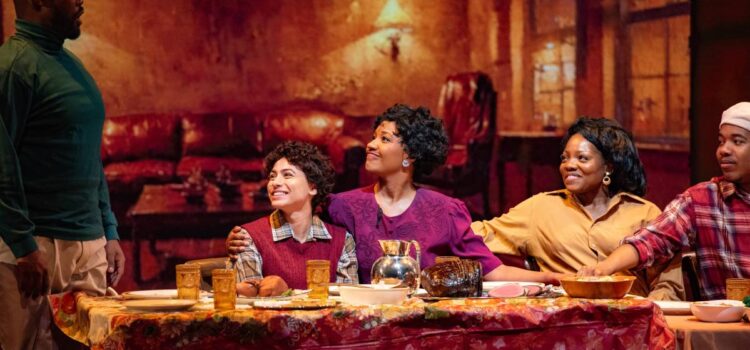By CB Adams
During one of the two intermissions in Opera Theatre of St. Louis’s third annual, three-pronged New Works Collective, I pondered aesthetics. Can there be a defining aesthetic – or more accurately, aesthetics with an s – for the St. Louis region?
Is there a commonality of our terroir to be found from a cross section of artists who have hailed from here? Do we have the St. Louis equivalent of the Philly Sound or Motown, the Ashcan School or Hudson River School (or the Venice Biennale), Spoleto or Tanglewood, or even Burning Man or Bonnaroo?
There’s no such thing as a St. Louis Method of acting, that talents of John Goodman, Doris Roberts, Stirling K. Brown, Marsha Mason, Vincent Price and Phyllis Smith notwithstanding.
“The Glass Menagerie” may name check some St. Louis locations, but it does not define life here any more than “White Palace” (the novel or the movie) does. The Gateway Arch is the steel equivalent of a Route 66 roadside attraction, but architecturally the city should still embrace its old moniker as the Red Brick City.
If there is a St. Louis Sound, it would have to somehow include musicians Scott Joplin, Chuck Berry, Pokey LaFarge and Nelly (yes, there are many more) and performers including Josephine Baker, Willie Mae Ford Smith, Donny Hathaway and Tina Turner (I went with personal faves here; the list goes on). The list could also include the St. Louis Symphony, especially the Slatkin years.
If there is a St. Louis “Move,” it would include, but not be limited to, a ballet like the recently premiered “St. Louis Blues,” choreographed by Gen Horiuchi, executive and artistic director at St. Louis Ballet, or practically everything from the Big Muddy Dance Company.
Fun to ponder these cultural accomplishments, but St. Louis arts and artists are far too diverse to be reduced that way. To borrow a song title from Bob Dylan, St. Louis contains multitudes.
Like the Symphony, which has commissioned new works such as last year’s “Visions of Cahokia,” a new orchestral piece by James Lee III, Opera Theatre of St. Louis premiered three new 20-minute operas at this year’s New Works Collective performances, March 14-16 at Kirkwood Performing Arts Center. In its third year, the New Works Collective is committed to extending the range of what opera can – and should – be as a still-relevant artform addressing modern stories and issues faced by diverse characters.
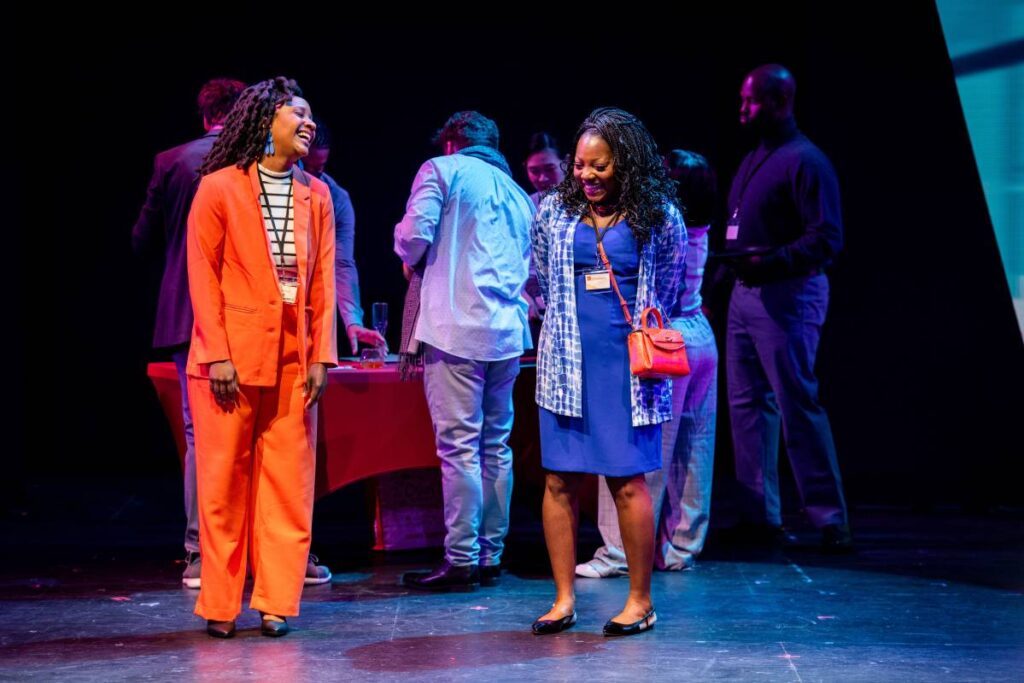
New Works Collective achieves this in numerous ways. For instance, the operas were chosen by a local panel of representative artists and community leaders who brought a Studs Terkel-like approach to their selection. The panel voted to support three operas to be nurtured and matured during a year-long incubation process.
One of the most exciting aspects of the panel’s selection is a sense of wonderment that seems to ask, “You can make an opera about that?” “Mechanisms,” with music by J.E. Hernandez and libretto by Marianna Mott Newirth, is a chamber opera study of neurodiversity, “Unbroken,” music by Ronald Maurice and libretto by J. Mae Barizo, examines the issues of single parenthood, death, resilience and legacy, and “On My Mind,” music by Jasmine Barnes and libretto by Deborah D.E.E.P. Mouton, follows a cautious friendship that begins at a work conference and builds into a fulfilling sisterhood.
On an application, each of these short operas and their creators show potential, but it’s the performance that ultimately decides their level of success. That’s where OTSL’s singers and production teams elevate them from concept to the reality of experiencing them.
There’s a scene in the television series “This Is Us,” when Mandy Moore’s Rebecca meets with record executives as she tries to launch her singing career. The execs tell her she’s good, but only “Philadelphia good.” There’s always a risk that homegrown achievements and talents might only be “good” at the local level. As with the previous two years, this year’s New Works Collective proves that St. Louis Good sets a standard as high as Made In Detroit … or even Made In America. It’s a badge of honor that can and should be applied to many of the region’s cultural achievements.
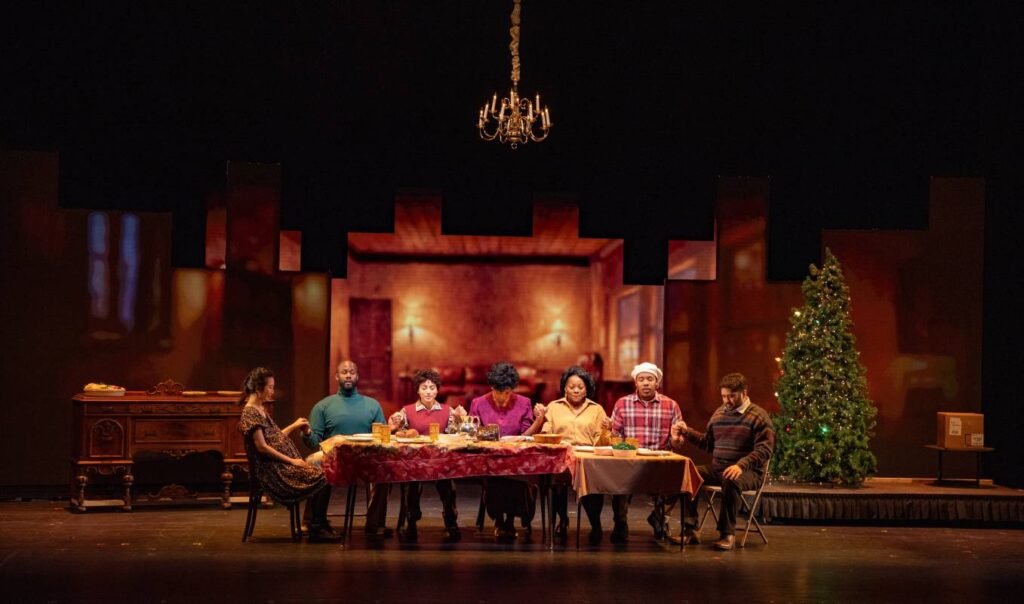
A 20-minute opera presents its own challenges that differ from a full-length production. The relationship is similar between short stories and novels. The best short stories are closer to poems than to novels. So, too, these shorter operas. All three felt complete and self-contained within the constraints of the medium. Each benefited from a tightly focused theme and narrative. None felt like a truncated version of a longer work, though “Unbroken” to some degree and “On My Mind” to a higher degree left me wanting to stay with the characters for a longer journey. They left me wondering what Barizo and Mouton could do with an expansion of their stories.
“Mechanisms” provided a more intense (and intensely interior) experience – and one that left me not wanting more because it felt so complete. One of my favorite descriptions of a successful short story ending comes from David Means, who wrote, “A good ending doesn’t answer a question. It opens up the deeper mystery of the story itself. There isn’t room in a short story to do anything but leave the reader alone with the story.”
That’s how “Mechanisms” satisfyingly ended for me – alone with the story and the 11-year old character, Roe, beautifully sung and acted by Helen Zhibing Huang. Hers was the virtuosic standout among all the other standout performances, including Maria Consamus as Roe’s mother, Lori, and Aaren Rivard as Dean, her father. Individually and together, Consamus and Rivard were engaging and believable as parents struggling to navigate their daughter’s journey and the world around them.
With diverse stories and characters, the New Works Collective operas benefited from the talents of diverse casts. As Grace in “On My Mind,” Meroë Kahalia Adeeb inhabited the role as the church-going, dying matriarch of her St. Louis family. The moment when she dies in a wheelchair, followed by the ending with a ghostly sort of resurrection – provided an emotional and deeply affecting one-two punch. John Godhard Mburu as Grace’s oldest son, Ezra, delivered a nuanced portrayal of a child maturing into a new role within the family and himself.
The heart of “On My Mind” were the two strangers destined to become sisters – Lyric, sung by Krysty Swann, and Melodee, sung by Adeeb. The success of these two performances reminded me of two things that other “funny women” have said. Jane Lynch has been quoted, “Making people laugh is a really fabulous thing because it means you’re getting deep inside somebody, into their psyche, and their ability to look at themselves.”
That’s a perfect description of what Swann and Adeeb achieved with the comedic libretto of “On My Mind.” They dug deep into their characters and projected them with pathos. Add to that something that Amy Sedaris has observed, “We’re all used to seeing pretty people. I want to see real people.” Opera is a highly distilled artform, but the best allows the audience to suspend their proverbially disbelief, and that is precisely what Swann and Adeeb accomplished.
Adding additional cohesion among the three operas were the talents of lighting Designer John Alexander, video designer David Murakami, stage director Kimille Howard and scenic designer Kim Powers. Using one basic set, lights and projections transitions seamlessly from a suburban home at Thanksgiving dinner to a hospital, a living room and a hotel ballroom in mid-convention (among others). One of the best uses of projection was in “Unbroken,” as the geometric back panels reveal a detailed interior of a church, then transition to a gauzy, impressionistic version of the same scene, followed by bright and sharp light streaming through a stained glass window. This same technique was used in the other operas, but worked most memorably in “Unbroken.”
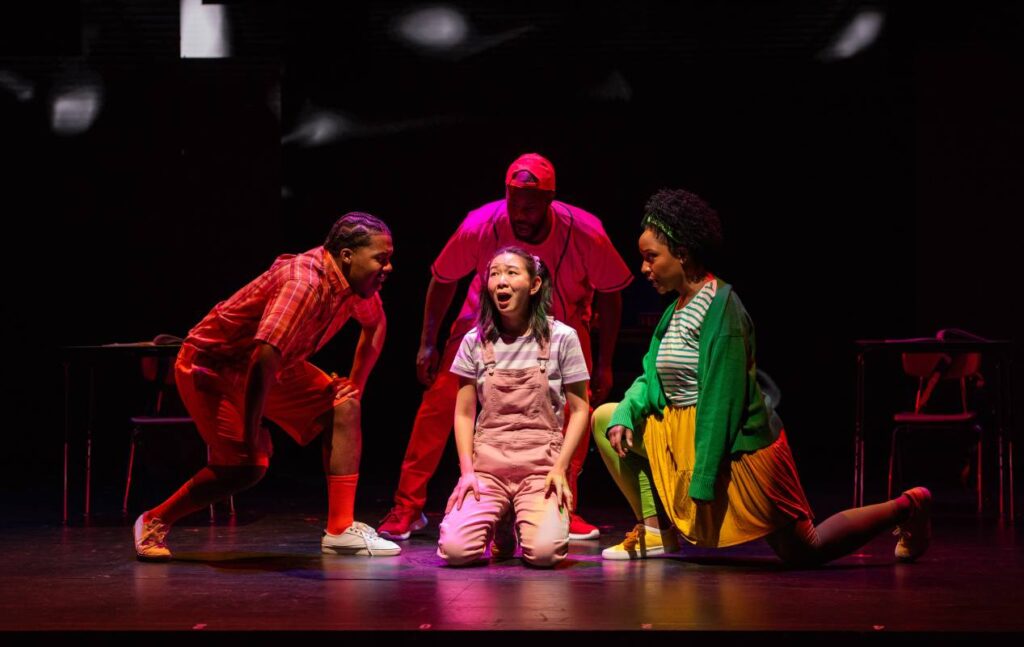
At the risk of reducing the music to a footnote, the performance of the small orchestra, led by Darwin Aquino was perfectly balanced and supported the singers admirably. The music received a top-notch performance, but the performances could have benefited from something missing – projected supertitles. I’ve become accustomed to supertitles in the same way I enjoy the on-screen subtitles on my streaming services. It was difficult to understand many parts of the evening’s operas.
OTSL’s New Works Collective is no mere check-the-box community outreach effort. It is integral to the OTSL’s dedication to keeping opera vibrant, viable and accessible to all. As director Howard said in her Director’s Note, “Representation matters; it is the strongest invitation and catalyst for change…through initiatives like the New Works Collective, where incredible up-and-coming composers and librettists are empowered to experiment, collaborate and share their voices with the St. Louis Community.”
The 2024 New Works Collective was a complete success. It’s not too soon to start looking forward to the 2025 performance. It’s sure to be St. Louis Great.
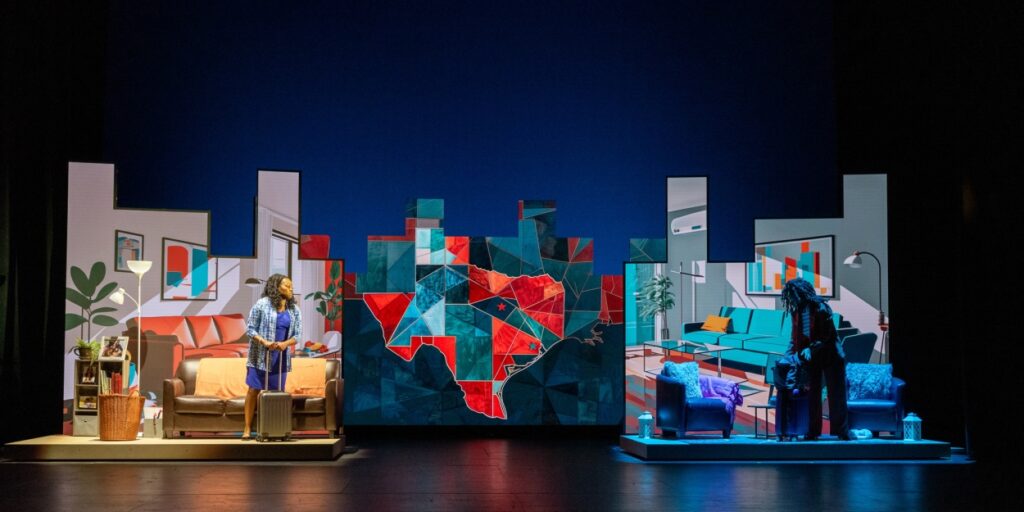

CB Adams is an award-winning fiction writer and photographer based in the Greater St. Louis area. A former music/arts editor and feature writer for the St. Louis Globe-Democrat, his non-fiction has been published in local, regional and national publications. His literary short stories have been published in more than a dozen literary journals and his fine art photography has been exhibited in more than 40 galley shows nationwide. Adams is the recipient of the Missouri Arts Council’s highest writing awards: the Writers’ Biennial and Missouri Writing!. The Riverfront Times named him, “St. Louis’ Most Under-Appreciated Writer” in 1996.

